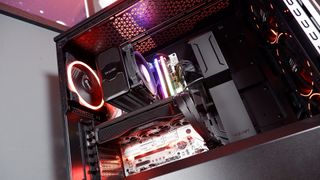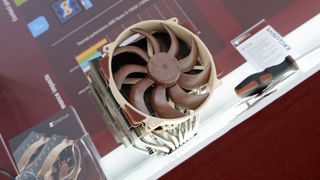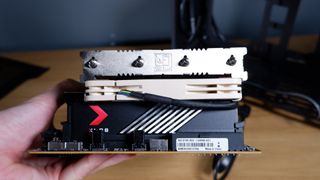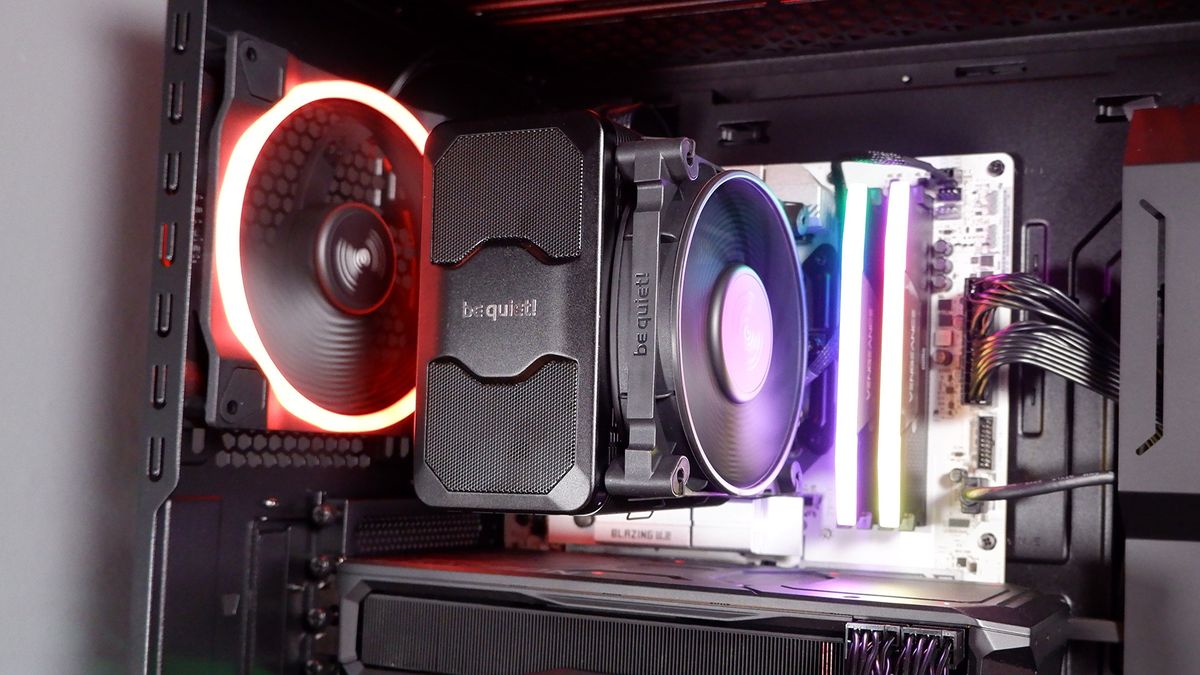Jacob Ridley, Managing Editor
This week I’ve been: Purchasing and trying out a handheld air blower. Why oh why have I been fighting with compressed air cans all these years? This thing rocks. It’s even a tiny vacuum to help me clean up cat hairs from my keyboard.
This month I’ve been: Over at CES, the Las Vegas show, to bring you the latest in the world of technology. Surprise, it’s all AI!
They might be seen by some to be out of fashion these days but the humble air cooler still has a lot going for it. In the past few months I’ve built a range of gaming PCs—you can read about my most recent build here—and none did I enjoy building more than the latest, featuring a chunky air cooler at its centre. This got me thinking: why are we so quick to ditch the air cooler, anyways?
The past decade has seen a shift from air to liquid cooling. Liquid cooling promised easier installs, more flexibility, more pizazz, and even, in some instances, lower temperatures. That’s still true of liquid cooling today, generally. Though on that last point, just because a 360 mm radiator has the potential to be better than your average single or even dual-tower air cooler isn’t a death knell for all air coolers, in fact it’s quite the contrary.
So, here’s my argument for an air cooler in 2025.
Air coolers are robust. They’re not easily ruined by accident and they last a long time, if taken care of. In theory as long as a fan’s motor lasts. In some cases, that’s a very, very long time. Take a Noctua NF-A14x25 G2, for example, that’s rated to a MTTF—or mean time between failures and meaning the average time it takes for a product to run into a failure—of over 150,000 hours. That’s over 17 years. Be Quiet!’s latest fan, the Silent Wings Pro 4, is rated to up to 300,000 hours. That’s over 34 years.
Even with these slightly ludicrous lifetimes seeming a little unlikely in practice—I don’t think anyone is keeping a CPU cooler operational for 34 years nor do I suspect the fan will be in good shape by the end of it—we’re talking a longevity largely unmatched by your average liquid chiller.
That true to an almost endless degree of air coolers without any fans at all, such as the Noctua NH-P1. That’s a different beast altogether and not exactly suitable for every application. It”s a beauty nevertheless, which brings me onto my next point.
Air coolers look fantastic. We so frequently discard these understated coolers for radiators, tubes, and pumps adorned with LEDs and sometimes even entire screens. Yet there’s a mechanical simplicity to an air cooler that shouldn’t be overlooked. A good-looking air cooler, like Be Quiet!’s Dark Rock 5, acts as a focal point for a clean-cut aesthetic. Air coolers generally aren’t visually overwhelming like their liquid counterparts—though they do take up a lot of space in your side panel view.

Then, performance. We’ve been gaslit by Big Cooler for too long into thinking we need a mighty 420 mm radiator for our plucky gaming processors. Okay, that’s an overstatement, but I do think it can often be assumed that an air cooler isn’t capable enough for most modern chips. That’s not the case at all, and with today’s lower-wattage processors or undervolted chips, they’re a great fit.
I tested the Dark Rock 5 with an Intel Core Ultra 5 245K recently. Not the most popular chip, I know, but it’s far more power-savvy at 125/159 W compared to the generations prior. The Dark Rock 5 barely broke a sweat. My max CPU temperature was 65°C in games and 76°C in CPU-heavy benchmarks.
We also tested the same cooler with the Core i7 14700K, which isn’t so easy on the outlet at 125/253 W. The Dark Rock 5 was understandably less well equipped for this chip and long, demanding benchmarking runs, leading the chip to throttle and reach temperatures well into the upper 90s. However, this is the single-tower model from Be Quiet! and it offers a larger dual-tower for this sort of thing. We don’t have that but we do have the Noctua NH-D15 G2, which stood up to the task and kept temperatures in control around the mid to high 80s.

In the interests of fairness, I have to say that Arctic’s Liquid Freezer III 360 and Be Quiet!’s Light Loop 360 mm hovered at lower temperatures, even under duress, around the low 80s or high 70s. Even as low as the high 60s while gaming. So, if you just want the lowest figure, well, go figure.
You’ll want a liquid cooler in other scenarios, of course. A high-end Intel processor that can easily suck up to 253 W from the wall, ie the 14900K, definitely. A Threadripper chip? Of course. But the best gaming CPU on the planet, the Ryzen 7 9800X3D? No, actually, you’re good with just a heatsink and some good old-fashioned airflow. How well it copes will depend on the overall size, stature, and fans on your chosen air cooler and the airflow provided by your case, but even plucky designs such as the Arctic Freezer 36 are brandishing claims to compatibility with performant processors.
And they’re quiet. That shouldn’t come as a huge surprise. A single fan, maybe two, maybe none (in some rare instances) is a lot quieter than a couple fans and a pump. Any moving parts tend to get louder as they become more worn out, but generally fans take a long time to reach that point, and they’re replaceable.

I’m not a big believer in ‘liquid coolers are a flood risk’ school of thought, as I’ve been unfair to more than my fair share of liquid coolers over the years and I’m still yet to experience a leak, but there’s always that argument for air coolers—they can only go so wrong. That said, a chunky air cooler attached to a motherboard might stay in tact, but take it on a bumpy car journey or send it in the post and sometimes the motherboard comes out worse for wear. Support your cooler and GPU when shipping, people!
These are all mostly important benefits for air cooling. Though I’ve saved the best until last. Air cooling is, of course, affordable. Really affordable.
Our favourite all-in-one liquid cooler, the Arctic Liquid Freezer III 360, will set you back $90 on Amazon right now. A Dark Rock 5? $65. That’s by and large considered a ‘premium’ offering—whereas a Hyper 212 will suffice for many mid-range processors and costs only $30.
So, before you head to the checkout, heed my call at least to consider an air cooler for your next build. Or don’t. I don’t actually have a stake in the matter and the beauty of PC building is you can do whatever you want and no one gets to tell you otherwise. But I do think air coolers are often overlooked when they should be more on our radars. They’re affordable, quiet, and competent—more often than not, an air cooler is all you need.

